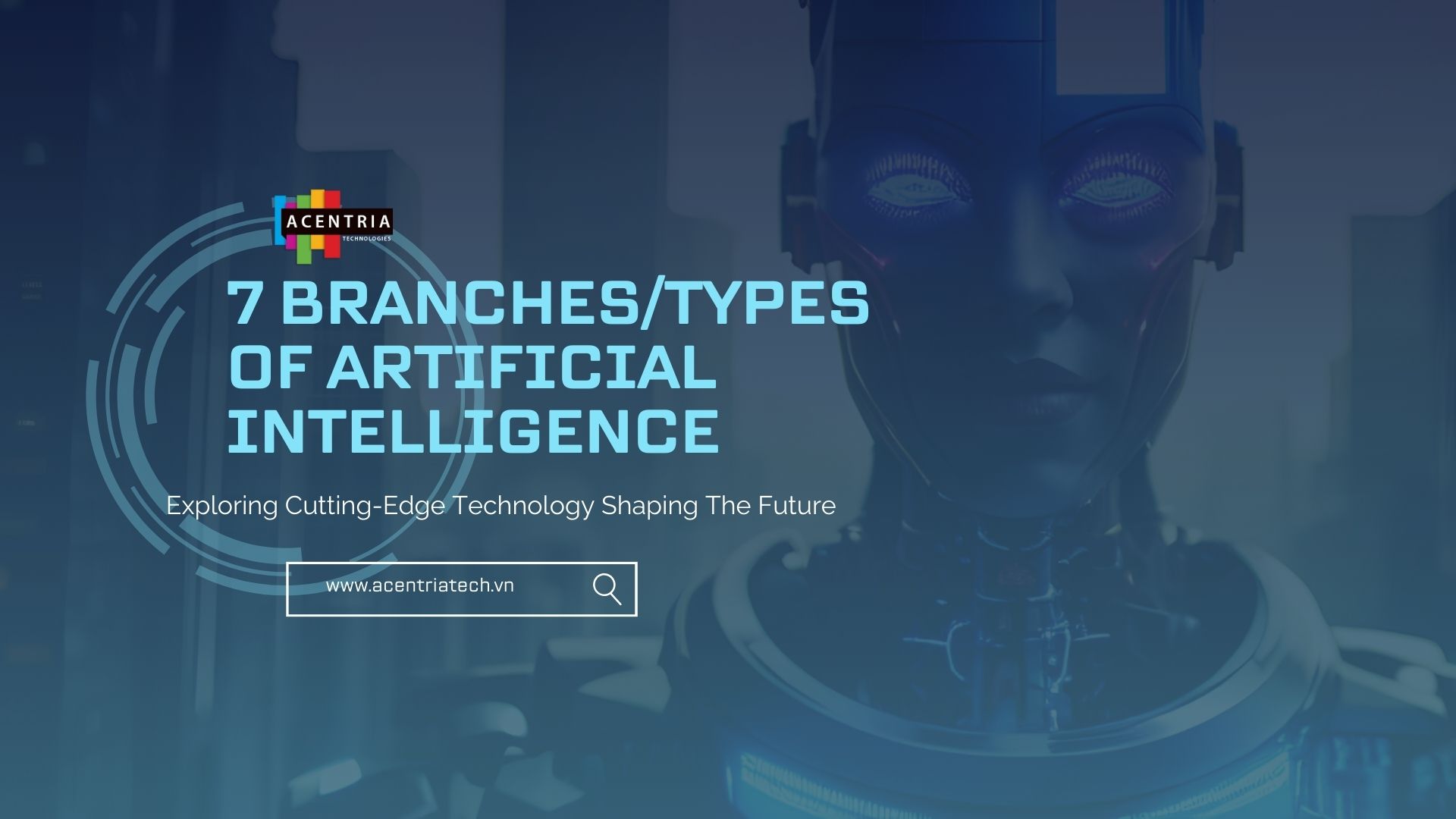Explaining the 7 Branches/Types of Artificial Intelligence and Their Uses
Artificial Intelligence (AI) is revolutionizing the way we interact with machines and data. As this technology continues to evolve, it has branched into various specialized fields, each contributing uniquely to solving complex problems across industries. Understanding the different branches of AI not only offers insights into how machines think and learn but also highlights their real-world applications. In this blog, we’ll explore the seven main branches of Artificial Intelligence and how they are used in various domains.
1. Machine Learning (ML)
Definition: Machine Learning is a subset of AI that enables machines to learn from data and improve over time without being explicitly programmed.
How It Works: ML uses algorithms to parse data, learn from it, and make informed decisions or predictions. There are three main types:
- Supervised Learning: Trains models on labeled data.
- Unsupervised Learning: Identifies patterns in unlabeled data.
- Reinforcement Learning: Learns by interacting with the environment and receiving rewards or penalties.
Use Cases:
Email spam filtering
- Fraud detection in banking
- Personalized product recommendations
- Predictive maintenance in manufacturing
- Tools: Scikit-learn, TensorFlow, PyTorch, Azure Machine Learning
2. Natural Language Processing (NLP)
Definition: NLP enables machines to understand, interpret, and generate human language.
How It Works: It uses computational linguistics and ML models to process and analyze large amounts of natural language data.
Use Cases:
- Virtual assistants like Siri and Alexa
- Chatbots in customer service
- Language translation services (Google Translate)
- Sentiment analysis in marketing
Popular Libraries: spaCy, NLTK, GPT (OpenAI), BERT (Google)
3. Robotics
Definition: Robotics integrates Designing and Developing AI Agents with mechanical engineering to design and build intelligent machines capable of performing tasks autonomously.
How It Works: Robots are equipped with sensors to perceive their environment, processors to make decisions, and actuators to perform physical actions.
Use Cases:
- Industrial automation (assembly lines)
- Healthcare (surgical robots)
- Military (autonomous drones)
- Service robots (vacuum cleaners like Roomba)
Emerging Trends: Swarm robotics, collaborative robots (cobots)
4. Expert Systems
Definition: Expert systems mimic the decision-making ability of human experts by using a knowledge base and inference engine.
How It Works: These systems use if-then rules to analyze information and provide recommendations or diagnoses.
Use Cases:
- Medical diagnosis (MYCIN, IBM Watson Health)
- Legal decision support
- Financial investment analysis
Benefits:
- High accuracy
- Consistent performance
- Fast decision-making in complex domains
5. Fuzzy Logic
Definition: Fuzzy Logic deals with reasoning that is approximate rather than fixed and exact. It mimics human decision-making by handling uncertain or imprecise information.
How It Works: Unlike binary logic (true/false), fuzzy logic variables may have a truth value ranging between 0 and 1.
Use Cases:
- Climate control systems
- Washing machines and refrigerators
- Automotive systems (e.g., anti-lock braking)
- Medical diagnosis systems
Advantage: Greater flexibility and tolerance for imprecision
6. Computer Vision
Definition: Computer vision enables machines to interpret and make decisions based on visual data like images and videos.
How It Works: It uses deep learning, pattern recognition, and image processing to identify, classify, and track objects.
Use Cases:
- Facial recognition (security and surveillance)
- Autonomous vehicles (obstacle detection, lane recognition)
- Quality inspection in manufacturing
- Healthcare (analyzing X-rays and MRIs)
Common Tools: OpenCV, YOLO (You Only Look Once), TensorFlow, Keras
7. Neural Networks and Deep Learning
Definition: Neural networks are computing systems inspired by the human brain. Deep Learning is a subset that uses multiple layers of these networks to analyze complex patterns.
How It Works: These models process data through layers of interconnected nodes (neurons), each performing simple computations to detect patterns.
Use Cases:
- Image and speech recognition
- Natural language processing
- Predictive analytics
- Financial forecasting
Popular Architectures:
- Convolutional Neural Networks (CNNs) for images
- Recurrent Neural Networks (RNNs) for sequential data
- Transformers for language models
Real-World Integration of AI Branches
In many applications, 7 Branches/Types of Artificial Intelligence work together. For example:
Autonomous vehicles use computer vision (to see), NLP (to interpret voice commands), and ML (to learn driving patterns).
Smart assistants combine NLP (to understand requests), expert systems (to provide answers), and deep learning (to improve over time).
These integrations make AI solutions more robust and intelligent, catering to real-world needs across industries.
Future Outlook of AI Branches
Each branch of AI is evolving rapidly, driven by advancements in computing power, algorithms, and data availability. Here’s what’s on the horizon:
- Explainable AI (XAI) will bring more transparency to neural networks and ML models.
- AI in edge devices will bring computer vision and ML to mobile and IoT devices.
- Human-AI collaboration will grow through improved NLP and robotics.
Governments, enterprises, and research institutions are investing heavily in 7 Branches/Types of Artificial Intelligence, making it essential for professionals to understand these core branches and their implications.
Conclusion
AI is a vast field composed of diverse yet interconnected branches, each playing a pivotal role in making machines smarter and more useful. From machine learning and natural language processing to robotics and computer vision, the seven key branches of AI are shaping the future of technology and society.
Understanding these branches not only helps in choosing the right AI solutions for specific problems but also opens up numerous career opportunities for aspiring data scientists, ML engineers, and AI specialists. As AI continues to evolve, these foundational pillars will remain essential to its growth and success.




